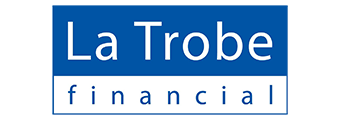Setting up an SMSF? You’ve likely come across the term electronic service address, or ESA.
Without an ESA, an SMSF can’t receive information about employer contributions. So, you could say it’s important to have one.
Let’s dive deeper into the nitty gritty of ESAs.
What is an electronic service address (ESA)?
An ESA kind of works like an email address. It tells employers of SMSF members where to send messages regarding super contributions and the likes.
To get more technical, it’s essentially an alias that represents the uniform resource locator (URL) or internet protocol (IP) address of an SMSF intermediary or an SMSF messaging provider.
An SMSF intermediary might be a tax agent, accountant, or a bank.
Why do SMSFs need an ESA?
By having an ESA, your SMSF can receive SuperStream data.
SuperStream is a format used for electronic payments and information moving between employers, super funds, service providers, and the ATO.
Most employers must pay employees’ superannuation guarantee contributions in a SuperStream-compliant way. Though, there are variations in how small and family-run businesses can operate in the super-space.
To make superannuation contributions to an SMSF, an employer typically needs that SMSF’s:
-
ABN
-
BSB and bank account information
-
Electronic service address
An ESA is also needed for the processing of other superannuation transactions, like voluntary contributions and the transfer of existing super to an SMSF.
How to get an electronic service address
Getting an ESA is simple.
If your SMSF uses an intermediary, like an SMSF administrator, tax agent, or accountant, you can get an ESA through them.
If it doesn’t, you’ll need to turn to an SMSF messaging service provider.
There are plenty of SMSF messaging providers to choose from, and some of them even offer services for free. Providers include Australia Post, Westpac, and Macquarie Bank.
If you change your SMSF’s ESA, you must let the ATO know.
Do all ESA messaging providers allow for rollovers?
No, not all ESAs allow a member to rollover their superannuation.
Rolling over refers to transferring your super from one fund to another. If you have an existing super balance and set up an SMSF, chances are you’ll want to roll over that balance into your new SMSF.
For the most part, rollovers must be done electronically. Which means, they demand an ESA.
But not all ESA providers allow for rollovers. If you need to roll your super from an existing fund to an SMSF, make sure you choose a messaging provider that allows this.
What happens if an SMSF doesn’t have an ESA?
If an SMSF doesn’t have an ESA, or a member of an SMSF doesn’t provide their employer with the fund’s ESA, that employer might ask them to fill out a superannuation standard choice form.
That form is likely familiar to the majority of Australian workers. It’s the form that sees employees inform a new employer about their choice of super fund.
If the employee doesn’t complete the form, their employer may have to reach out to the ATO to find their ‘stapled super fund’. That is, one that’s already attached to the employee’s name.
If the employee doesn’t have a stapled super fund, the employer can make super guarantee contributions to its default fund.
Thinking about buying property via an SMSF? Explore some of the best SMSF loan offers available now.
| Lender | Home Loan | Interest Rate | Comparison Rate* | Monthly Repayment | Repayment type | Rate Type | Offset | Redraw | Ongoing Fees | Upfront Fees | Max LVR | Lump Sum Repayment | Additional Repayments | Split Loan Option | Tags | Row Tags | Features | Link | Compare | Promoted Product | Disclosure |
|---|---|---|---|---|---|---|---|---|---|---|---|---|---|---|---|---|---|---|---|---|---|
6.74% p.a. | 6.76% p.a. | $3,240 | Principal & Interest | Variable | $null | $230 | 70% |
| Promoted | Disclosure | |||||||||||
6.99% p.a. | 7.04% p.a. | $3,323 | Principal & Interest | Variable | $0 | $220 | 70% | Disclosure | |||||||||||||
6.84% p.a. | – | $3,273 | Principal & Interest | Variable | $0 | $995 | 80% | ||||||||||||||
7.00% p.a. | 7.39% p.a. | $3,327 | Principal & Interest | Variable | $0 | $445 | 60% |
Image by Mathyas Kurmann on Unsplash
Speak to an SMSF lending specialist
Whether you're looking to refinance or purchase investment property with your SMSF our partners can help you find the right SMSF home loan.
Collections: SMSF








Share